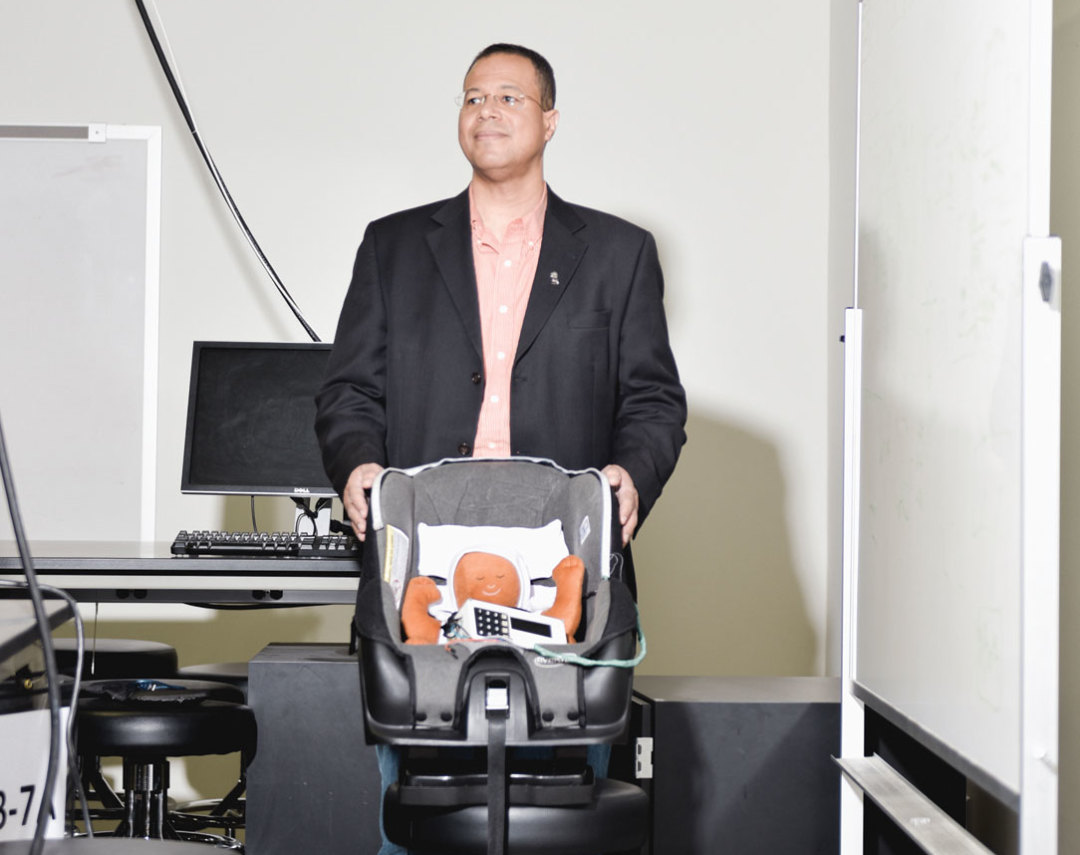Saving Children With—and From—Car Safety Seats

Dr. Andrew Meade
Image: Max Burkhalter
The child safety seat, first introduced in 1962—just three short years after three-point seatbelts were themselves installed in cars—has proved to be something of a mixed blessing. Over the years, countless lives have been saved by parents who properly use them, but properly using them means turning the seat rear-facing until a child reaches the age of 2, as recommended by the American Academy of Pediatrics. Which is one reason why children are forgotten in cars, often with dire consequences.
On average, there are 37 deaths from heatstroke each year due to parents neglecting to unstrap and take their children with them when leaving their vehicles. One would suspect that young children are especially vulnerable in hot climates like ours, and they are. Over the last 17 years, Texas has led the nation in the number of infant heatstroke deaths, with 95. (Florida, at No. 2 on the list, had only 68 over the same period.)
“Parents are so busy. All it takes is a distraction,” says Andrew Meade, an engineering professor at Rice. “These are accidents. It’s not in their routine. How many times have you forgotten to do an errand because you were worried about another task and you were operating on auto-pilot?”
It’s for this reason that a team of senior engineering students, led by Meade, created what they hope is a solution to the problem: an integrated car seat accessory that can be attached to a car seat and will alert parents, caregivers and passersby when an infant is left unattended in a parked car.
“If the child hasn’t been removed from the seat after five minutes then the other part of the system will send a text alert to up to nine people,” says Meade. Red LED lights and audible sirens will hopefully signal passersby as well. But the most ingenious part of the Rice engineering students’ invention is its passive cooling system, which can maintain an infant’s core body temperature below 104 degrees for at least an hour. “If we could extend it to two hours that would be great,” Meade says, noting that his team is currently streamlining the accessory, which will lay over the car seat like a potentially life-saving blanket. “I’d rather overdesign when it comes to a child’s life.”
The next step is testing the design—christened the Infant SOS—to make it as user-friendly as possible. “Then after that, we can hopefully market it as an accessory,” says Meade. “I’m thinking it’s parallel to the idea that car seats were once considered accessories. We’d love to work with the car seat manufacturers and have it installed in every car seat.” —




